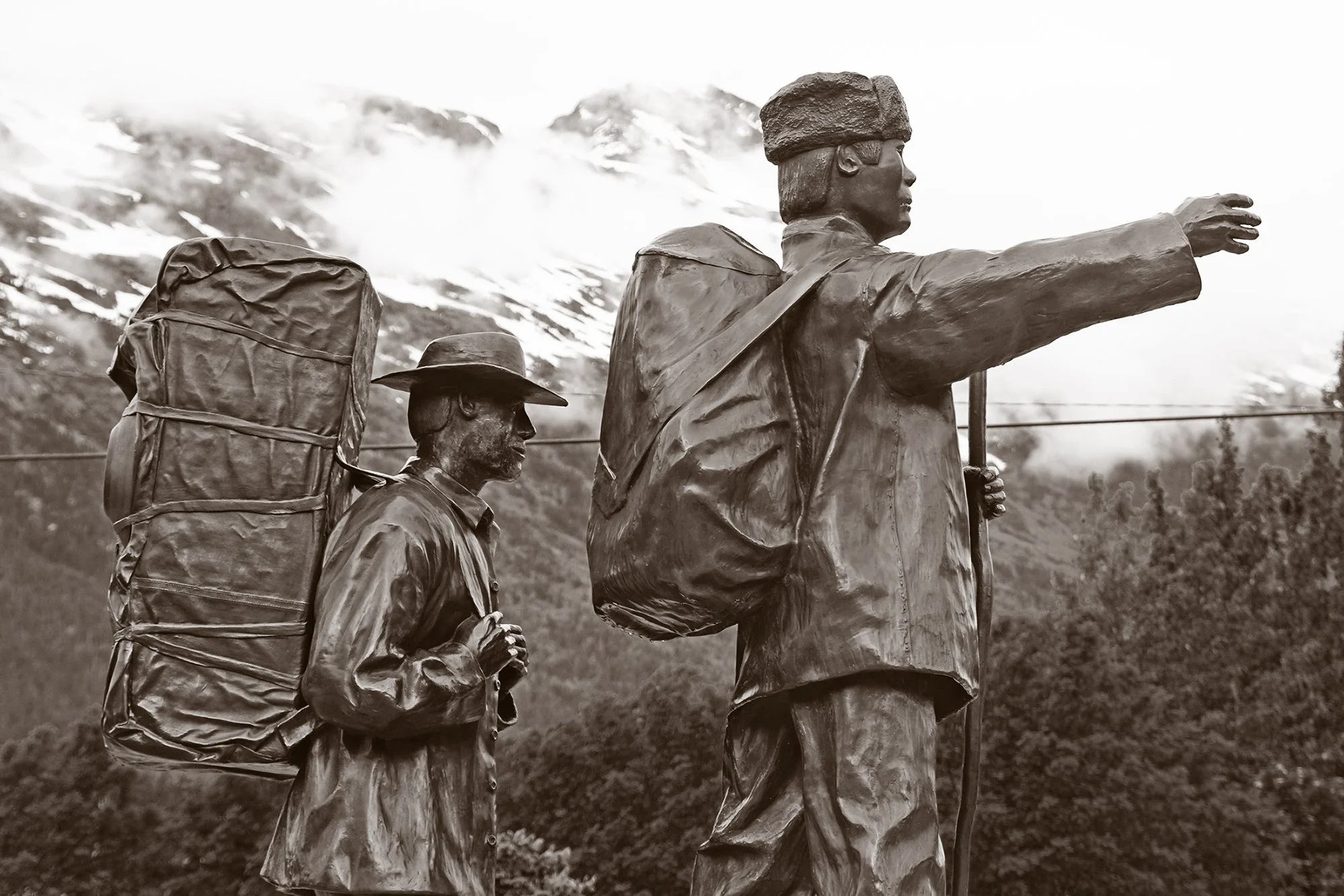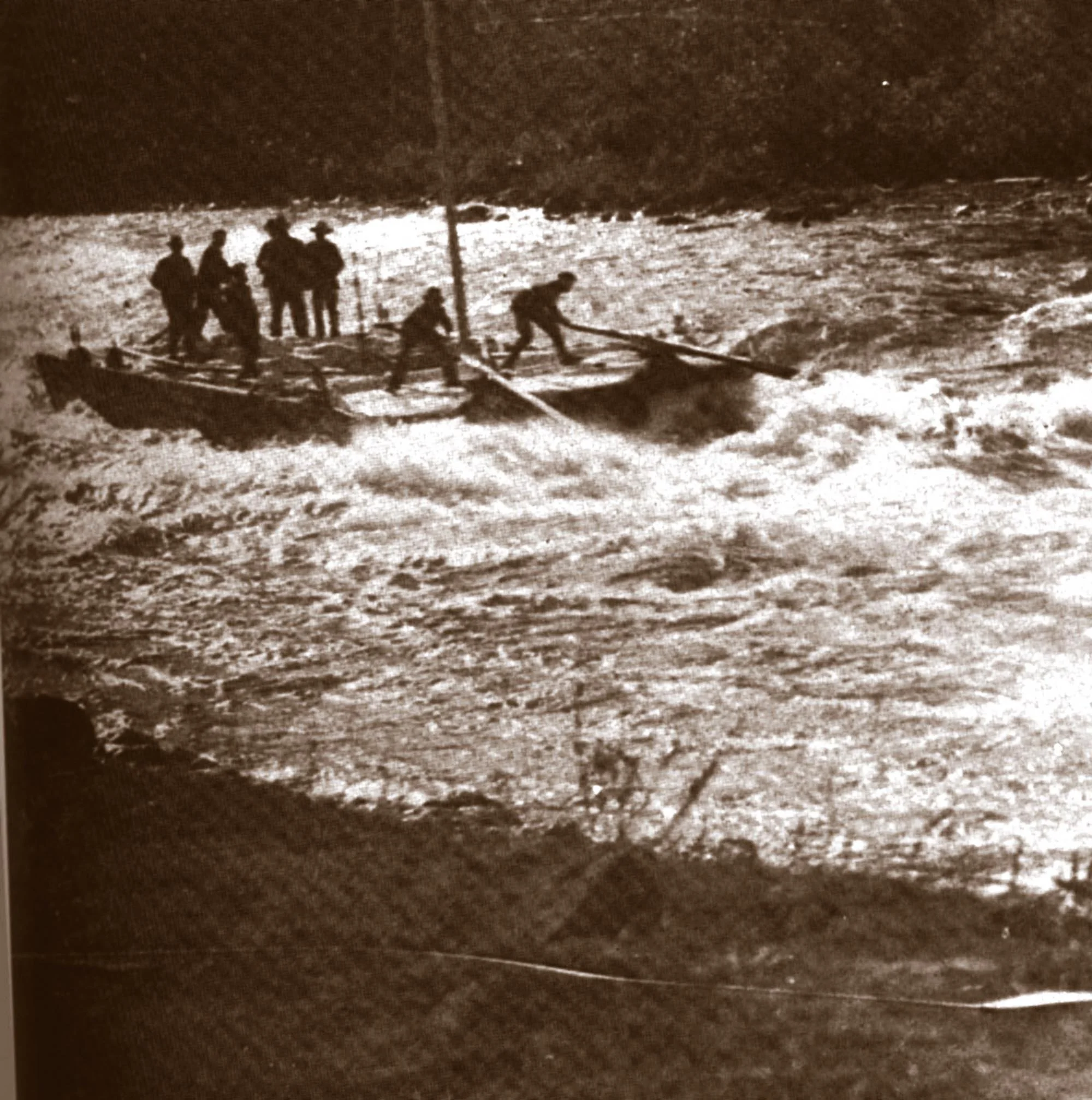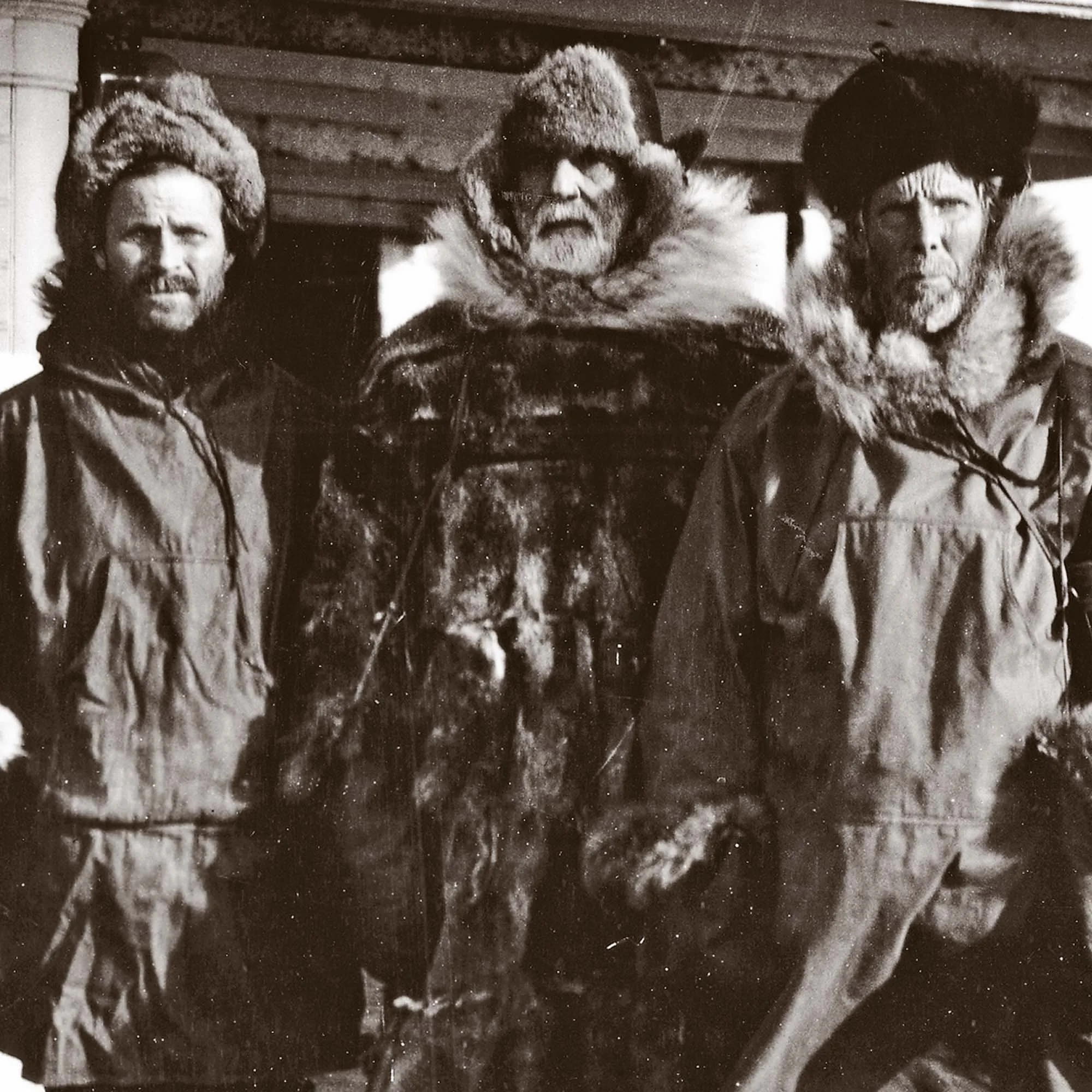Gold Rush Tales
The “Klondikers” - the tens of thousands of men that passed through Skagway in the winter of 1898-1899 - struggled over the mountain passes and created the largest tent city in the world on the shore of frozen Lake Bennett, headwaters of the Yukon River.
Downriver 500 kilometers was Dawson and the fabled Klondike River. The only way to get there was to cut down trees, saw them into planks, and try to fashion barges and boats that would carry them safely down the Yukon and its many rapids to their share of the fabulous bonanza that they had left their jobs, farms, and families for.
A few entrepreneurs had steam powered sawmills, but for most it was the brutal pit saw: the big logs on a platform one man above, one man underneath, on either end of the long whipsaw, better known as a “misery whip.”
“Some leaked, some didn’t steer. They had lots of things wrong with them. But a lot of the boats, made of whipsawed lumber, had beautiful lines and sailed as pretty as anything I ever did see on the Columbia. Yes, sir, that was an expedition, that fleet of boats getting ready to sail from Lake Bennett, come spring of ‘98.”
After a winter and a spring of working and waiting, the ice finally broke up in late May. Some 7,000 watercraft of all shapes and sizes passed out of the lake during an eighteen-hour period on May 29 and 30, 1898.
The trip became a journey of epic proportions. Down the canyons and through the rapids they came, some capsizing or breaking up; the survivors trying to hitch a ride on the next boat that had room.
The wealthier switched to Yukon steamers as soon as the river got wide enough.
But for most, disappointment awaited them. The best claims were staked before most had even left home. Only half who got there even staked a claim. Just a very few struck it rich. Most found some kind of work in Dawson or the diggings, made a little money and moved on.
But their adventure transcends time. All experienced the powerful drama of The North. Those who returned to the lower 48, even penniless, brought back stories and memories to entertain generations of breathless children and grandchildren.
Photos: UW14504, Anchorage Museum b-64-1-43, UW Hegge 227, UW 21255, UW Thwaites 0394-1286







